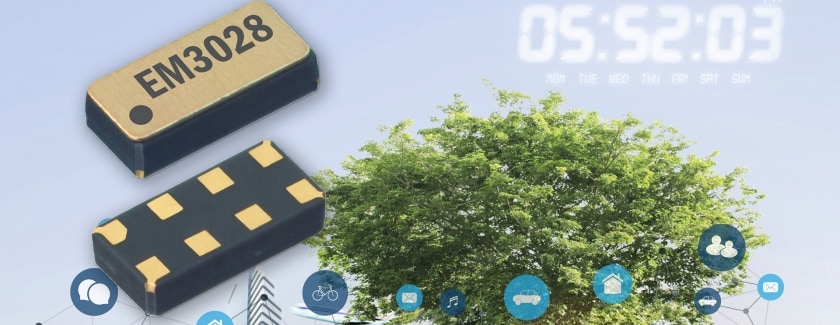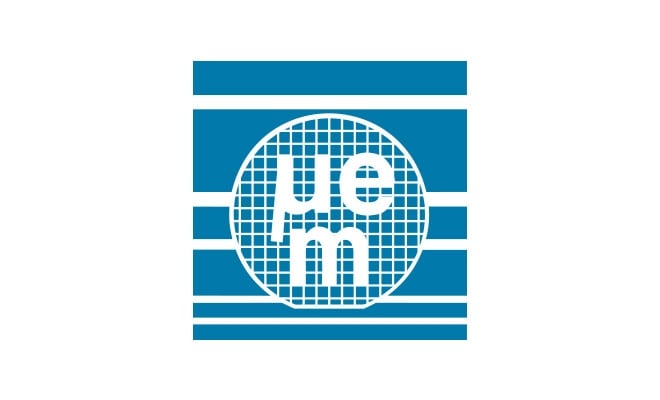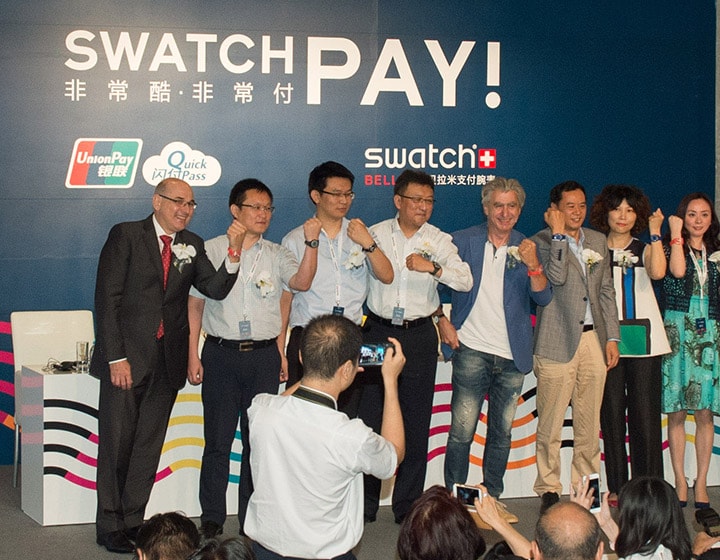EM3028 extends battery life of connected devices by 50%


Marin, Switzerland, 26 March 2018 – EM Microelectronic, the ultra-low-power semiconductor company of the Swatch Group, and a leading technology provider for connected objects, today announced the release of its EM3028 Extreme low power Real-Time Clock (RTC) module, setting a new industry benchmark for accuracy and power consumption.
EM3028 leads the way for green IoT applications, with 50% extended battery life compared to its closest competitor, at double the accuracy. It extends the device life span at a reduced overall BOM cost.
The EM RTCs provide an elegant solution for increasing the autonomy of connected devices, by providing accurate sleep and wake-up timing for their power-hungry elements, thus enhancing the global user experience. The frustrating need to frequently charge or replace the batteries of a wearable device becomes a thing of the past with the EM3028 used as an ideal companion for EM’s energy harvesting solutions, this unique combination requiring, in certain applications, no charging or battery replacement throughout the complete device life span.
The high accuracy and long-term stability of this RTC guarantee consistent performance throughout the device lifetime without the need to calibrate during manufacturing. Its 1-ppm accuracy guarantees a staggering 30 seconds precision over one year, twice as good as the best-in-class RTC previously on the market, while consuming the energy equivalent of 4 water drops per day.
The device features an integrated backup switch and, thanks to the extreme low power operation, allows waking up a sleeping device even years after it has been switched off for power saving purposes, all at extremely low BOM cost.
“Today we set a new world record, with 40nA current consumption for 1-ppm accuracy, making the EM3028 the perfect embodiment of our watchmaking DNA: Swiss precision timing combined with ultra-low-power microelectronics”, says Michel Willemin, CEO of EM Microelectronic. “This development is a major stepping stone for our vision of a green IoT with a seamless user experience, based on zero-maintenance devices”.
Other key features of EM3028 include a 32-bit UNIX timer, operating voltage range as low as 1.2V, as well as a plug-and-play, factory pre-calibrated non-volatile configuration setting guaranteeing the configuration and user parameters are never lost, even in case of system power fail. The extremely small device size makes it ideal for integration in tiny wearable applications.
The EM3028 is available as a standalone IC or in customized, application-specific modules, in combination with other parts from the EM portfolio, such as our Energy Harvesting controllers, EM9304 BLE chip and a wide variety of sensor solutions.
Related news

EM|echo-V receives “Best new product” award
Swatch Group’s EM Microelectronic em|echo-V holistic omnichannel RAINFC solution receives prestigious industry award An RFID industry pioneer EM Microelectronic, the ultra-low-power semiconductor company of the Swatch Group, has pioneered the RFID industry for over 30 years. Numerous EM products paved the way for new industry segments and…
EM Microelectronic: new generation of Bluetooth beacons
EM Microelectronic enables easy deployment of smart logistics and location services with a new generation of Bluetooth beacons EM‘s Swiss quality modules double the range and battery life while lowering the deployment cost. Marin, Switzerland, 17 September 2018 – EM Microelectronic, the ultra-low-power semiconductor company of the Swatch Group…

SWATCH PAY!
THE COOL WAY TO PAY Time to pay! Whether it is settling an account or indulging in a little retail therapy, an easier solution is only a wrist away. With SWATCH PAY, Chinese debit and credit cards are conquered by contactless technology, avoiding hassle and saving time. Swatch Group CEO Nick Hayek presented SWATCH PAY, the second generation of…